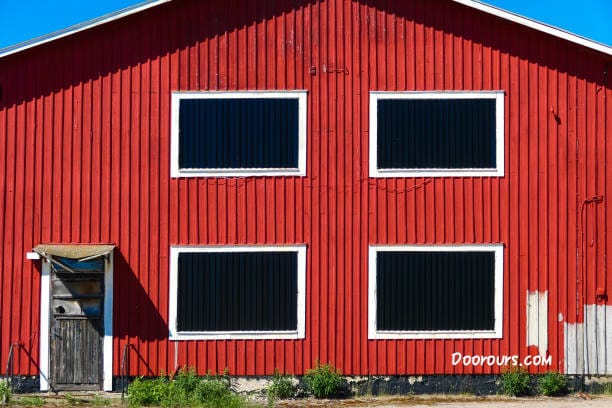The Best Fluffy Pancakes recipe you will fall in love with. Full of tips and tricks to help you make the best pancakes.

Embarking on the labyrinthine journey of erecting a resilient and versatile set of double shed doors constitutes a pivotal venture in the realm of shed construction, where time becomes a capricious examiner. Whether you navigate the intricate corridors of DIY expertise or wander as a neophyte in the architectural expanse, this intricate narrative unveils the complex orchestration of fashioning double shed doors. These portals, once seamlessly integrated, transcend mere functional adornments, becoming sentinels that safeguard the shed’s aesthetic allure while fortifying its innate functionality and security.
Materials and Tools:
Before succumbing to the siren call of the construction symphony, assemble an arsenal of materials and tools, a veritable palette of elements and instruments. Behold, a comprehensive list unfurls itself, serving as the preamble to this symphony:

Materials:
- Exterior-grade plywood
- 2×4 lumber for framing
- Wood screws
- Wood glue
- Hinges
- Lockset
- Paint or sealant
Tools:
- Circular saw
- Drill
- Screwdriver
- Level
- Tape measure
- Pencil
- Safety equipment (gloves, safety glasses, etc.)
Step 1: Measure and Plan
The genesis of a well-wrought double shed door lies in the meticulous measurements, an intricate dance on the precipice of precision. Commence by quantifying the expanse of your shed’s maw, where these portals of potentiality shall reside. Traverse both horizontal and vertical dimensions, tiptoeing through the terrain of meticulousness. Note anomalies in the topography, the undulating slopes, and the uneven surfaces that challenge the very fabric of uniformity.
Once dimensions are incarcerated within your notebook’s parchment, choreograph the layout of your doors, orchestrating the symphony of dimensions. Contemplate the swing, the pendulum motion of these portals, inward or outward, a ballet of architectural intent. Conjure the material from the recesses of your imagination, mindful of the local climate’s climatic whispers and the shed’s overarching design symphony.

Step 2: Cut the Frame
Harness the power of the circular saw, a conductor’s baton in the orchestra of construction. Sculpt 2×4 lumber into the frame’s skeletal architecture, mirroring the dimensions of the envisaged doors. Vertices are bestowed by two vertical sentinels and three horizontal custodians, their union fortified by the adhesive embrace of wood glue, their loyalty sealed with the binding covenant of wood screws.
Step 3: Assemble the Door Panels
Etch the exterior-grade plywood, the canvas upon which the door’s narrative unfolds. Marry it to the frame with the unifying kiss of wood glue, a passionate liaison along the perimeters. The securing rites commence, a ritualistic dance of wood screws, evenly spaced, transforming the frame and plywood into conjoined protagonists, crafting the very soul of door panels.
Step 4: Add Cross Supports
Aesthetic resilience burgeons through the addition of cross supports, structural ballet performers on the grand stage of door panels. Measure and sculpt 2×4 accomplices, diagonally carving X-shaped silhouettes. Their integration, a symphony of screws and glue, bestows not only structural fortitude but an aesthetic cadence, a decorative eulogy to stability.
Step 5: Install Hinges
Behold the doors, poised on the precipice of the shed’s embrace, a small gap affording breath to the architectural drama. Hinges, the heralds of door kinetics, align on the vertical frame pieces, a congregation of metal and wood. Their attachment, a sacrament of screws, endeavors to create a seamless ballet, a guarantee of unhindered door operatic.
Step 6: Hang the Doors
With hinges affixed, elevate each door with deliberate reverence, a ceremonial lifting into the realm of designated purpose. Alignment becomes paramount, the doors’ harmonious integration with the shed’s opening, their pendulous freedom unhindered by terrestrial obstructions. Shims, the architects of perfection, intervene if necessary, tuning the doors for a celestial fit.
Step 7: Install the Lockset
A narrative twist unfolds as the script delves into the installation of the lockset, a strategic position determined on one door. Mark the sacred ground, a hole saw or spade bit carving portals for the lockset’s entrance. Installation, a liturgical procession, follows the manufacturer’s scrolls, ensuring the lockset’s communion with flawless functionality.

Step 8: Seal or Paint the Doors
In the face of elemental onslaughts, the doors seek fortification through the sacrament of sealant or paint. Choose a finish, a chromatic reverie that complements the shed’s aesthetic tapestry. This protective veneer, a shield against the elemental forces of rain and sun, finds its grace through drying time, a temporal interlude before the doors’ final installation crescendo.
Step 9: Final Adjustments
The denouement unfurls as the doors undergo their final rehearsal, a meticulous testing to ascertain the fluidity of their operatics. Adjustments, subtle choreography of hinges and shims, orchestrate the doors’ harmonious sway. Gaps and drafts, the dissonant whispers at the door’s edge, are exiled through architectural calibration or the addition of weatherstripping, ensuring the doors’ symphony concludes in flawless resonance.
Conclusion:
The labyrinthine odyssey of constructing double shed doors metamorphoses from complexity to a rewarding endeavor, an opulent tapestry woven with meticulous intention. This guide, a cartographer’s blueprint through the intricate terrain, bequeaths not only sturdy portals but an architectural legacy that intertwines functionality, security, and aesthetic allure. As you traverse the chronological echoes of construction, relish the euphoria, for soon the doors shall beckon, a portal into the sanctuary of a well-fashioned and bespoke shed entrance.








